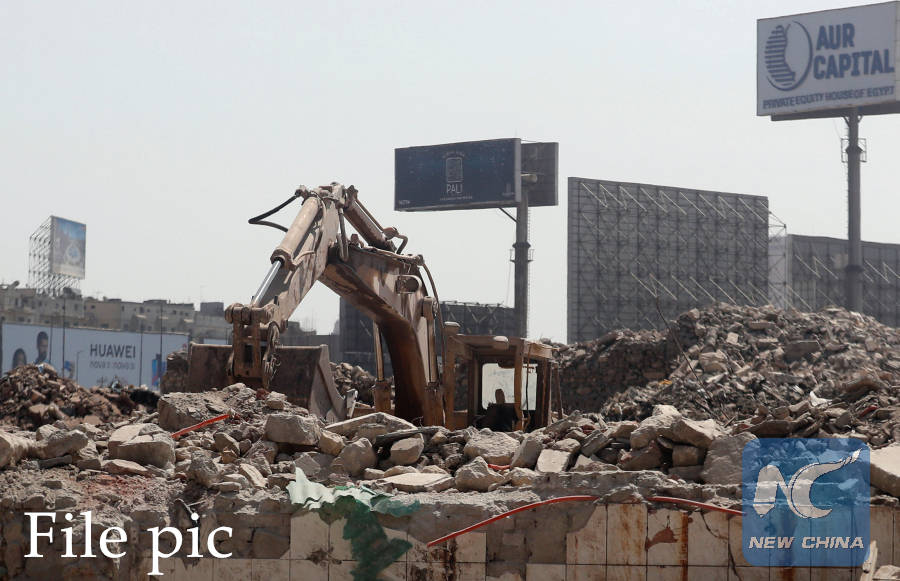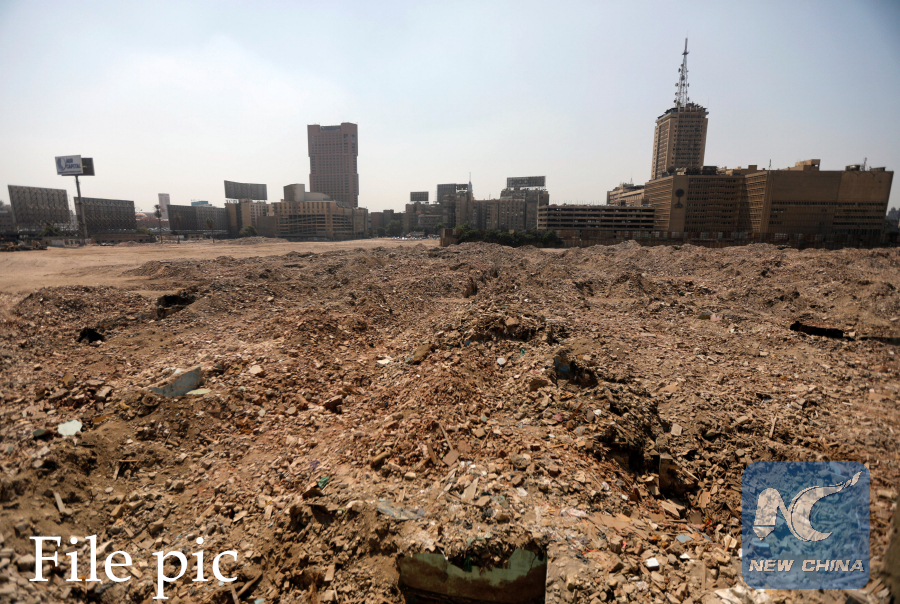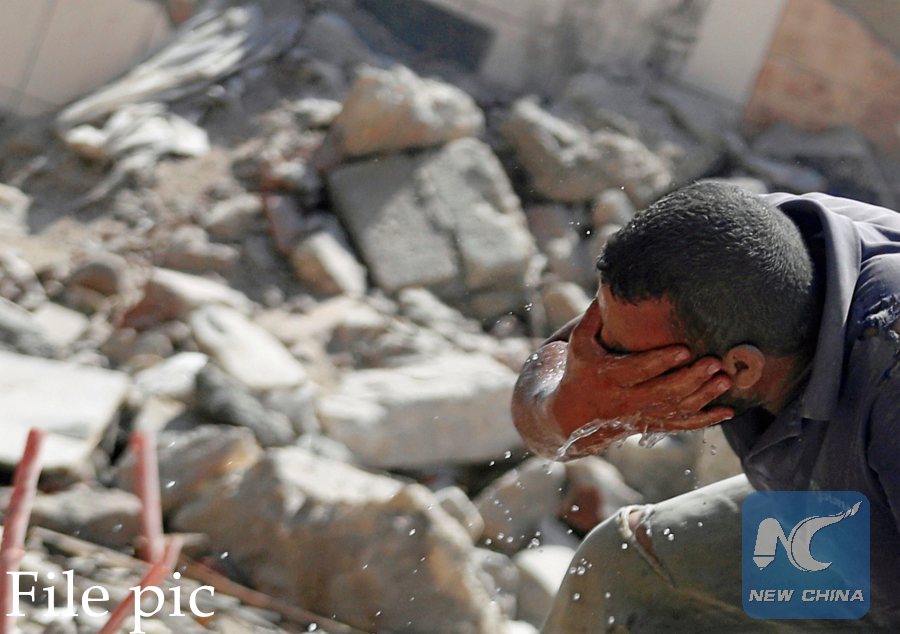
A digger is seen as a slum is demolished, behind the Egyptian Radio and Television Union (ERTU) headquarters in the so-called "Maspero Triangle" in Cairo, Egypt, on Sept. 13, 2018. (Reuters file photo)
CAIRO, Nov. 18 (Xinhua) -- Egypt is working to eradicate 80 percent of about 366 unsafe slums across the country by the end of this year and all of them by mid-2019, an Egyptian official said in a recent interview with Xinhua.
"When President Abdel-Fattah al-Sisi took office in mid-2014, Egypt already had about 366 unsafe slums and more than 1,000 random marketplaces, while about 40 percent of the country's construction area was unplanned," said Khaled Siddiq, director of Egypt's Slum Development Fund (SDF).
"These are the three categories of random buildings that we are concerned with and seek to eradicate," Siddiq explained.
Sisi gave instructions in the second half of 2016 to eradicate dangerous and unsafe slums in the country within two years, according to Siddiq.
The SDF belongs to the Egyptian cabinet and the prime minister is the head of its board of directors.

A general view of a government-demolished slum behind Egyptian Radio and Television Union (ERTU) headquarters in the so-called "Maspero Triangle" in Cairo, Egypt, on Sept. 13, 2018. (Reuters file photo)
Siddiq clarified that there are four types of unsafe slums.
"The first type is the imminently dangerous slums including those subjected to rockslides or mountainous collapses. The second is the inconvenient homes including illegally built ones, those built of tinplates or wood and those with aluminum roofs," Siddiq said.
The third type refers to unhealthy ones such as those built in highly polluted industrial areas, under high voltage power transmission lines or in swamp areas with polluted drinking water.
The fourth type of slums, the SDF director said, refers to the ones with irregular ownership such as the slums illegally possessed for being built on other people's lands.
Siddiq noted that there are 30 imminently dangerous slums across Egypt, with 26 in the capital Cairo, but their inhabitants have been moved to new buildings in the three-phase Asmarat housing project.
Cairo's Ezbet Khair-Allah and Manshiyat Nasser neighborhoods are the biggest shantytowns in Egypt, he added.
"There are also 1,103 random marketplaces in Egypt, including 134 in Cairo, 83 in nearby Giza and 84 in the coastal province of Alexandria," the official said, pointing out that the SDF has a center that gathers information and analyzes related data.
He revealed that the fund has already finished the establishment of 12 new marketplaces and is currently studying the building of 26 others.
"Sometimes reconstruction of the area of an eradicated slum is not available, as in cases of rockslides and mountainous collapses. We also don't rebuild lands of eradicated slums around railways and in some flood vulnerable areas," the SDF chief told Xinhua.
"Another solution is to provide slum inhabitants with financial compensations to own apartments in the state social housing projects," he added.

A laboror washes his face at a slum being demolished behind Egyptian Radio and Television Union (ERTU) headquarters in the so-called "Maspero Triangle" in Cairo, Egypt, on Sept. 13, 2018. (Reuters file photo)
However, it is more difficult to develop the vast unplanned areas and have them equipped with proper services such as water, electricity, road networks and communications, Siddiq said.
"The development of such unplanned areas needs some 350 billion Egyptian pounds (19.5 billion U.S. dollars) and about 10 years," he explained.
The SDF also seeks to provide a decent life for the households moving from slums by building "an integrated system that includes constructional, cultural, environmental and economic development," Siddiq said.
"Without working on the cultural, social and psychological aspects, the developed areas will turn into new slums," he noted.
"We focus on building humans before building stone structures," the SDF director told Xinhua.

